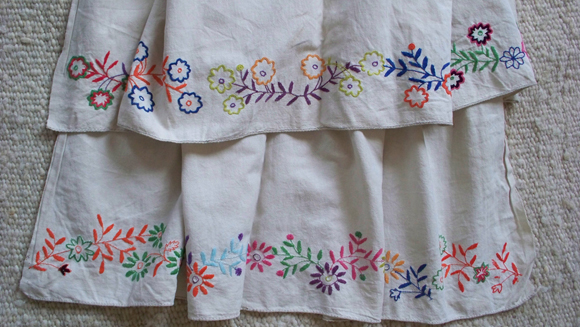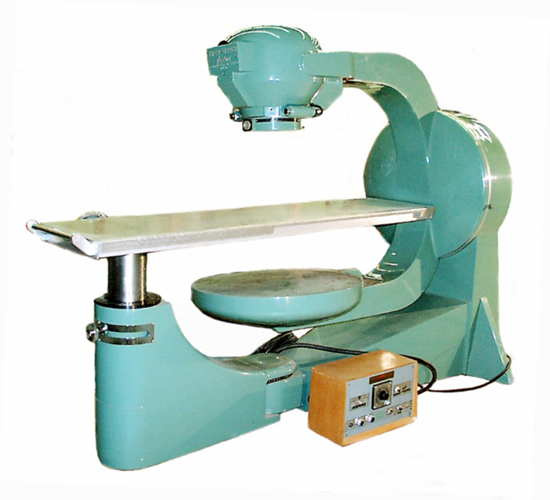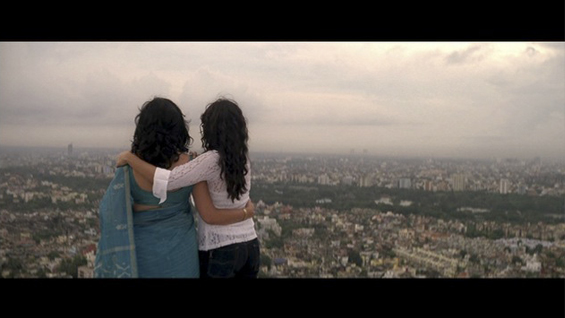Friends of Art History Visual Culture Series 2013/14
UPCOMING LECTURES:
Friday, March 21, 2014, 2:30 p.m., 412 St. Patrick’s Building

“Doing Ethnography among Women Who Hand Sew: Tarahumara (Rarámuri) aesthetics and ontology as reflected by their Clothing”
Dr. Frances Slaney, Associate Professor, Department of Sociology and Anthropology, Carleton University.
In this talk, I will address the visual culture of Tarahumaras (or Rarámuri) in northwestern Mexico (Sierra Tarahumara) where I did my doctoral fieldwork. In particular, I will talk about their handmade clothing, in terms of its colour coding and production by women in relation to their community’s annual ritual cycle. I found my own role as someone designated to locate, purchase and bring cloth from the city to these women, one of various means through which I garnered a broader sense of Tarahumara material culture and aesthetics – their striking hand sewn clothing being but one small component.
=====================================================
PAST LECTURES
=====================================================
Friday, February 28, 2014, 2:30 p.m., 412 St. Patrick’s Building (*** new date)
“Gendered Passages in Portraiture”
Debra Graham, Assistant Professor, Pauline Jewett Institute of Women’s and Gender Studies, Carleton University.
Modern portraiture was founded on the belief that a naturalistic representation of the exterior appearance best expressed the inner nature of the sitter. Typically framed as a singular and coherent image, the modernist standard was based on the ideal of the white, male body and stemmed from a patriarchal vision of authority, stability, and truth. In contrast, postmodern portraiture has a legacy in the “feminine”, which entails a more fluid sense of identity. Contemporary practice tends to reference subjective positions of the sitter, which may include allusions to fantasies, community relationships, sexual desires, socio-geographical locations, and even disembodiment. This presentation traces gendered passages from modern to postmodern portraiture.
=====================================================
Friday, November 22, 2:30 p.m., 412 St. Patrick’s Building
“The Politics of Emergence: The Status of Place in Contemporary Bengali Cinema”
by Malini Guha, Assistant Professor, Film Studies
Scholarship that addresses the role of location shooting often privileges its ability to archive the past lives of place on film. This paper will explore the possibilities of conceptualizing the function of location shot footage not in relationship to its archival abilities but with respect to the notion of emergence, using a series of contemporary Kolkata-set Bengali films as a case study. The central question this paper examines is whether or not location shot imagery can operate as the basis for depictions of place that signify with respect to the aspirations, desires and anxieties shaping discourses regarding the future of cities.
=====================================================
Friday, October 25, 2:30 p.m., 412 St. Patrick’s Building
“Sell Out? Mechanical reproduction and early twentieth-century Canadian landscape artists”
by Catherine Sinclair, Senior Curator, Ottawa Art Gallery
Though the famed Group of Seven artists, and many of their contemporaries, are known for their lush oil paintings of the Canadian wilderness, they also worked in commercial art and illustration and participated in promotional projects for their brand of Canadian art. In association with the exhibition Sell Out? currently on view at the Ottawa Art Gallery, this lecture will give an overview of some of these practices, including their graphic sketches from the Firestone Collection of Canadian Art, book illustrations, graphic posters created for the Canadian National and Canadian Pacific Railways companies, Rous & Mann, Ltd. Canadian Artists Series Christmas cards, and National Gallery of Canada/Sampson-Matthews, Ltd. silkscreen reproductions. The debate over the status of different art practices has been a hot-button issue throughout the twentieth-century. Acknowledging the history and aesthetic value of mechanically reproduced artwork brings to light the variety of motives for their creation, and validates them as genuine artistic practices.
=====================================================
Friday, September 27, 2:30 p.m., 412 St. Patrick’s Bldg

- “Theratron Junior Cobalt 60 machine, 1956” – Image: Canada Science and Technology Museums Corp.)
“Green, the colour of medicine”
by David Pantalony, PhD, Curator, Physical Sciences and Medicine
Canada Science and Technology Museum
Medicine went green in the 1950s. Spinach green, restful green, misty green and eye-ease green were found in hospital clothing, instruments, tiles and furniture. Surgeons used it to prevent glare in the surgical theatre, hospital architects and designers used it to beautify and calm the patient environment, and instrument makers used it to market a new generation of post-war medical technology. The largest push behind the widespread adoption of green in hospitals came from a group of industrial colour consultants in the United States. The leading figure was Faber Birren, a former graduate of the Chicago Art Institute, who set up a highly influential and successful colour consulting business in New York City. In this talk I draw on a variety of materials from medical collections –objects, buildings and print – to examine the roots of this transformation.
==================================


